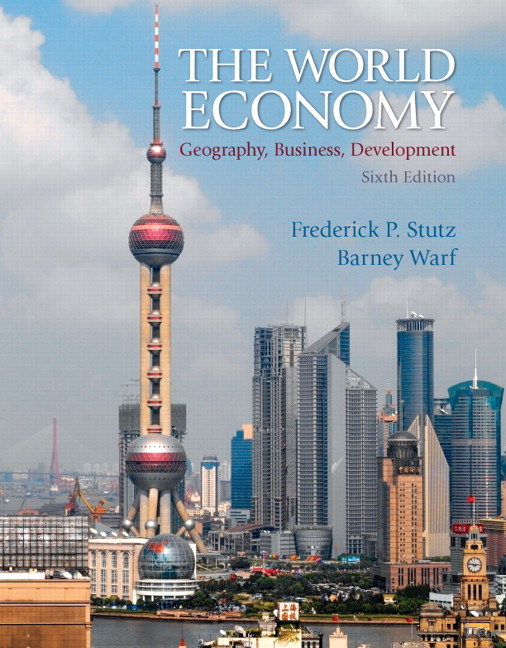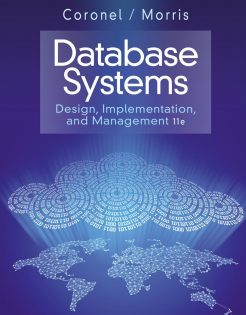Description
All resources are in electronic format and can be downloaded from your account once your payment is confirmed. Payments will be processed instantly after checkout. Please note that all sales are final and non refundable. If you still have questions, find answers on our FAQ page.
The World Economy: Geography, Business, Development, 6e (Stutz/Warf)
Chapter 1 Economic Geography: An Introduction
1.1 Multiple Choice
1) Which of the following is the least important to geographers and geographical study?
A) the inner city
B) the core of the earth
C) the human body
D) locations on the surface of the earth
E) rapidly changing industrializing countries
Answer: B
Diff: 2
Topic/Section: Geographic Perspectives
Standard: 3: How to analyze the spatial organization of people, places, and environments on Earth’s surface.
Bloom’s: Knowledge
2) All of the following are examples of globalization of consumption, EXCEPT
A) playing U.S.-style football.
B) wearing blue jeans.
C) eating McDonald’s hamburgers.
D) watching anime from Japan.
E) driving a Volkswagen.
Answer: A
Diff: 2
Topic/Section: Globalization
Standard: 10: The characteristics, distribution, and complexity of Earth’s cultural mosaics.
Bloom’s: Synthesis
3) According to the authors of your textbook, what has become LESS important because of globalization?
A) international finance
B) national and state borders
C) transnational corporations
D) foreign direct investment
E) international tourism
Answer: B
Diff: 2
Topic/Section: Globalization
Standard: 12: The processes, patterns, and functions of human settlement.
Bloom’s: Knowledge
4) In which of the following cities would a transnational corporation be LEAST likely to have its headquarters?
A) Toronto, Canada
B) Berlin, Germany
C) Beijing, China
D) Tokyo, Japan
E) London, England
Answer: C
Diff: 2
Topic/Section: Globalization
Standard: 12: The processes, patterns, and functions of human settlement.
Bloom’s: Synthesis
5) Economic geography is concerned with
A) production.
B) transportation.
C) communication.
D) consumption.
E) All of the above
Answer: E
Diff: 1
Topic/Section: Economic Geography
Standard: 3: How to analyze the spatial organization of people, places, and environments on Earth’s surface.
Bloom’s: Knowledge
6) In what places is the highest rate of growth in tourism expected?
A) tropical regions
B) mid-latitude areas
C) mountains, especially those that feature extreme mountain-climbing experience
D) major world cities
E) China and India
Answer: A
Diff: 2
Topic/Section: Globalization
Standard: 4: The physical and human characteristics of places.
Bloom’s: Knowledge
7) Which of the following is NOT a critique of logical positivism (spatial analysis)?
A) It ignores historical context.
B) It tends to ignore the motives of individuals.
C) It pays too little attention to statistical analysis.
D) It portrays geographies as unchanging.
E) It tends to represent people as points on a map.
Answer: C
Diff: 3
Topic/Section: Modes of Theorizing in Economic Geography
Standard: 3: How to analyze the spatial organization of people, places, and environments on Earth’s surface.
Bloom’s: Synthesis
8) The discipline of Geography primarily examines
A) place names and capitals.
B) political institutions.
C) population.
D) environmental issues.
E) why things are located where they are.
Answer: E
Diff: 1
Topic/Section: Globalization
Standard: 3: How to analyze the spatial organization of people, places, and environments on Earth’s surface.
Bloom’s: Knowledge
9) Geography is best described as a discipline
A) concerned with memorizing the locations of places, especially the largest/longest phenomena.
B) in which space, how the earth’s surface is used, and how human activities differ from place to place is studied.
C) that uses maps, performs cartographic analysis, and publishes atlases.
D) that is a branch of Geology.
E) that incorporates the latest technologies available.
Answer: B
Diff: 1
Topic/Section: Geographic Perspectives
Standard: 3: How to analyze the spatial organization of people, places, and environments on Earth’s surface.
Bloom’s: Comprehension
10) To view the world geographically is to see space as
A) a monetary value.
B) a challenge.
C) unchangeable.
D) socially produced.
E) a product of government decisions.
Answer: D
Diff: 1
Topic/Section: Geographic Perspectives
Standard: 3: How to analyze the spatial organization of people, places, and environments on Earth’s surface.
Bloom’s: Comprehension
11) What is a main focus of poststructuralists in geography?
A) the nature of capitalism
B) pollution
C) human agencies causing change
D) the influence of historical forces on present day phenomena
E) urban design
Answer: A
Diff: 2
Topic/Section: Geographic Perspectives
Standard: 3: How to analyze the spatial organization of people, places, and environments on Earth’s surface.
Bloom’s: Comprehension
12) What is a core belief of poststructuralists in geography?
A) Countries must develop by passing through stages.
B) Technological progress is inevitable.
C) Poverty can be ended with governmental action.
D) There is no single objective view of the world.
E) Decision makers are always rational in their behavior.
Answer: D
Diff: 3
Topic/Section: Geographic Perspectives
Standard: 3: How to analyze the spatial organization of people, places, and environments on Earth’s surface.
Bloom’s: Comprehension
13) Where and when did capitalism originate?
A) Indian Subcontinent (South Asia) in the late nineteenth century
B) Middle East in the eighth and ninth centuries
C) North Africa in the early seventeenth century
D) North America and South America in the thirteenth century
E) Western Europe in the late fifteen and sixteenth centuries
Answer: E
Diff: 1
Topic/Section: Capitalism
Standard: 17: How to apply geography to interpret the past.
Bloom’s: Knowledge
14) The guiding imperative in capitalist economies is
A) the means of production.
B) means of transportation.
C) profit.
D) resource allocation.
E) service efficiency.
Answer: C
Diff: 1
Topic/Section: Capitalism
Standard: 11: The patterns and networks of economic interdependence on Earth’s surface.
Bloom’s: Comprehension
15) Gross national product is a measure of
A) economic development.
B) educational achievement.
C) overall health.
D) environmental damage.
E) democratization.
Answer: A
Diff: 1
Topic/Section: Capitalism
Standard: 11: The patterns and networks of economic interdependence on Earth’s surface.
Bloom’s: Knowledge
16) The U.S. has the largest economy in the world, and Japan has the third largest. Which country has the second-largest economy in the world?
A) Great Britain
B) Brazil
C) China
D) Russia
E) India
Answer: C
Diff: 1
Topic/Section: Capitalism
Standard: 10: The characteristics, distribution, and complexity of Earth’s cultural mosaics.
Bloom’s: Synthesis
17) What system involves free markets with minimal government intervention?
A) bordeaux
B) coup d’etat
C) laissez faire
D) placido
E) torreon
Answer: C
Diff: 1
Topic/Section: Capitalism
Standard: 11: The patterns and networks of economic interdependence on Earth’s surface.
Bloom’s: Knowledge
18) What percentage of the world’s population is in the United States, and what is its share of world economic output?
A) 3% of population; 12% of output
B) 5% of population; 25% of output
C) 9% of population; 20% of output
D) 15% of population; 40% of output
E) 20% of population; 50% of output
Answer: B
Diff: 1
Topic/Section: Capitalism
Standard: 11: The patterns and networks of economic interdependence on Earth’s surface.
Bloom’s: Knowledge
19) What are the principal instruments of globalization in the last 30 years?
A) GDPs
B) GNPs
C) NGOs
D) TNCs
E) UGRs
Answer: D
Diff: 1
Topic/Section: Economic Geography of the World Economy
Standard: 11: The patterns and networks of economic interdependence on Earth’s surface.
Bloom’s: Knowledge
20) What was the Second World?
A) countries dependent on exports of raw materials
B) information-based sectors of the world economy
C) rapidly developing countries
D) the Soviet Union and Eastern Europe
E) the lesser-developed areas of wealthy countries
Answer: D
Diff: 1
Topic/Section: Economic Geography of the World Economy
Standard: 17: How to apply geography to interpret the past.
Bloom’s: Knowledge
21) What is the Fourth World?
A) countries that are often targeted for investment from the First World
B) economically vital countries that have only one major export
C) small countries, such as those in the Pacific Ocean
D) the poorest countries of the Third World
E) women and children
Answer: D
Diff: 1
Topic/Section: Economic Geography of the World Economy
Standard: 13: How the forces of cooperation and conflict among people influence the division and control of Earth’s surface.
Bloom’s: Knowledge
22) When did the United States displace Britain as the world’s leading superpower?
A) 1780s; immediately after the American Revolution
B) 1830s; during an economic recession in Europe
C) 1870s; with industrial growth following the Civil War
D) 1940s; after World War II
E) 1970s; after the global oil shocks
Answer: D
Diff: 1
Topic/Section: Economic Geography of the World Economy
Standard: 17: How to apply geography to interpret the past.
Bloom’s: Knowledge
23) What is a hegemonic power?
A) the most powerful country in the world
B) a country that controls key energy resources
C) any country with a strong military
D) a collection of allies that pursue common interests
E) a continent that has internal unity
Answer: A
Diff: 1
Topic/Section: Economic Geography of the World Economy
Standard: 13: How the forces of cooperation and conflict among people influence the division and control of Earth’s surface.
Bloom’s: Synthesis
24) When did the relative power of the United States begin to decline with intense competition from Japan and Germany?
A) 1820s
B) 1850s
C) 1870s
D) 1950s
E) 1970s
Answer: E
Diff: 2
Topic/Section: Economic Geography of the World Economy
Standard: 13: How the forces of cooperation and conflict among people influence the division and control of Earth’s surface.
Bloom’s: Knowledge
25) In what decade did the Soviet bloc collapse and disappear?
A) 1950s
B) 1960s
C) 1970s
D) 1990s
E) 2000s
Answer: D
Diff: 1
Topic/Section: Economic Geography of the World Economy
Standard: 17: How to apply geography to interpret the past.
Bloom’s: Knowledge
26) Globalization
A) is inherently negative.
B) is mostly negative.
C) is a mixture of both negative and beneficial effects.
D) is mostly beneficial.
E) is always beneficial.
Answer: C
Diff: 2
Topic/Section: Globalization
Standard: 6: How Culture and Experience Influence People’s Perceptions of Places and Regions.
Bloom’s: Evaluation
27) Which of the following is NOT TRUE regarding globalization and telecommunications?
A) Virtually all of the people on Earth have access to the Internet.
B) Uneven distribution of wealth means some people lack access to telecommunications.
C) The global digital communications network greatly enhances the globalization of culture.
D) Some people resent globalization as they see it as American cultural imperialism.
E) Some societies have enthusiastically adopted Western culture.
Answer: A
Diff: 2
Topic/Section: Globalization
Standard: 11: The patterns and networks of economic interdependence on Earth’s surface.
Bloom’s: Synthesis
28) What are TNCs? (These are sometimes referred to as MNEs.)
A) fiber-optic cable networks that link developed countries
B) transfers of payments from developed countries to lesser developed countries
C) stock markets around the world, especially in the wealthier countries
D) multi-national companies, they are often headquartered in the developed world
E) media networks that spread cultural ideals from one place to another
Answer: D
Diff: 1
Topic/Section: Globalization
Standard: 11: The patterns and networks of economic interdependence on Earth’s surface.
Bloom’s: Knowledge
29) Which is NOT TRUE regarding TNCs?
A) Most maintain their headquarters in North America, Western Europe, and Japan.
B) Their total number has decreased since 1970 with mergers and consolidations.
C) TNCs have the advantages of economies of scale.
D) TNCs are the primary agents of international trade.
E) They account for a large portion of the goods produced in the world.
Answer: B
Diff: 3
Topic/Section: Globalization
Standard: 11: The patterns and networks of economic interdependence on Earth’s surface.
Bloom’s: Synthesis
30) What is FDI?
A) the work force of a TNC in the developing world
B) shipments of goods between countries at reduced costs
C) investment by foreigners in factories that are operated by the foreign owners of a TNC
D) balance of trade deficits that often result in profits being leaked back to the developed world
E) investments in technology that speed up communications in the world economy, like satellites and fiber optics
Answer: C
Diff: 2
Topic/Section: Globalization
Standard: 11: The patterns and networks of economic interdependence on Earth’s surface.
Bloom’s: Knowledge







Reviews
There are no reviews yet.